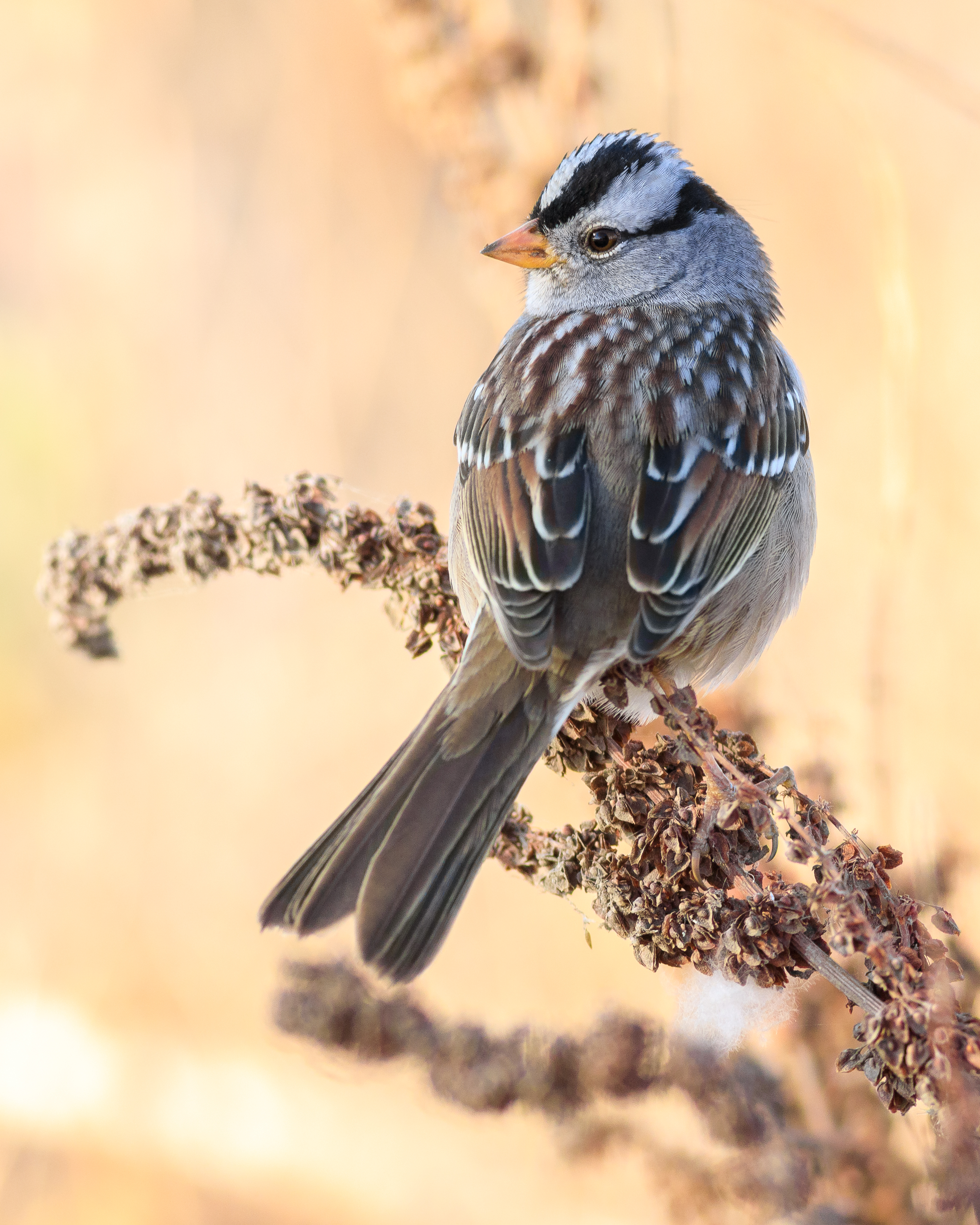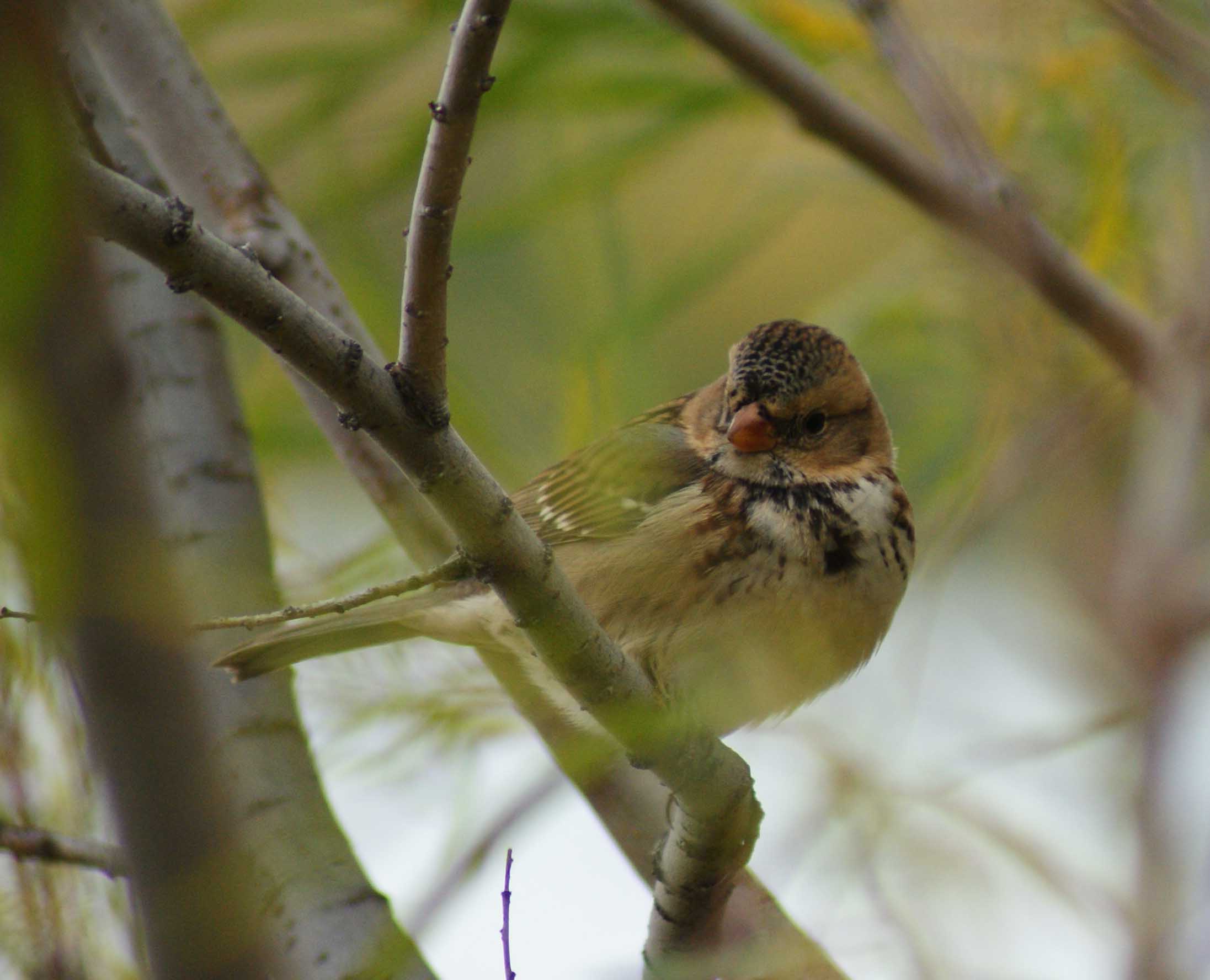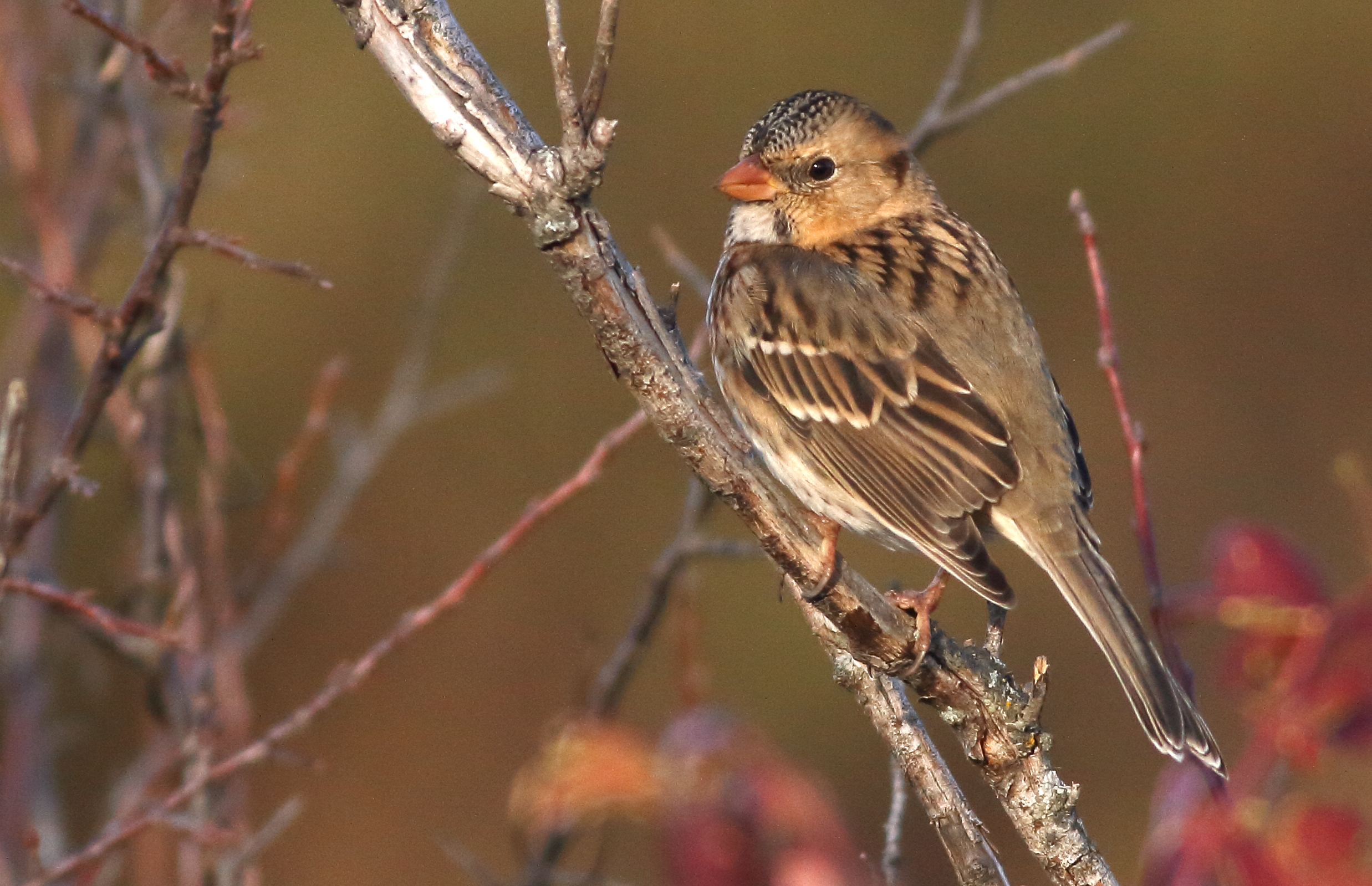|
Zonotrichia
''Zonotrichia'' is a genus of five extant American sparrows of the family Passerellidae. Four of the species are North American, but the rufous-collared sparrow breeds in highlands from the extreme southeast of Mexico to Tierra del Fuego, and on Hispaniola. Etymology The genus name ''Zonotrichia'' is from Ancient Greek (, ) and (, ). Species The species in the genus ''Zonotrichia'' are: These birds have brown backs streaked with black, and distinctive head markings. Their cup nests, built by the female, are of plant material lined with fine grasses and constructed on the ground, low in a tree or bush, or in a niche in a wall. The female lays brown-blotched greenish-blue or greenish white eggs, which she incubates for 12–14 days. The male helps in feeding the chicks. ''Zonotrichia'' sparrows feed on the ground on seeds, fallen grain, insects and spider Spiders ( order Araneae) are air-breathing arthropods that have eight legs, chelicerae with fangs generally ab ... [...More Info...] [...Related Items...] OR: [Wikipedia] [Google] [Baidu] |
White-crowned Sparrow
The white-crowned sparrow (''Zonotrichia leucophrys'') is a species of passerine bird native to North America. A medium-sized member of the New World sparrow family, this species is marked by a grey face and black and white streaking on the upper head. It breeds in brushy areas in the taiga and tundra of the northernmost parts of the continent and in the Rocky Mountains and Pacific coast. While southerly populations in the Rocky Mountains and coast are largely resident, the breeding populations of the northerly part of its range are migratory and can be found as wintering or passage visitors through most of North America south to central Mexico. Etymology The scientific name is from Ancient Greek. The genus name ''Zonotrichia'' is from Ancient Greek (, ) and (, ). The species name ''leucophrys'' is from (, ) and (, ). Description Adults have black and white stripes on their head, a gray face, brown streaked upper parts and a long tail. The wings are brown with bars and t ... [...More Info...] [...Related Items...] OR: [Wikipedia] [Google] [Baidu] |
Rufous-collared Sparrow
The rufous-collared sparrow or Andean sparrow (''Zonotrichia capensis'') is an American sparrow found in a wide range of habitats, often near humans, from the extreme south-east of Mexico to Tierra del Fuego, and the island of Hispaniola (split between the Dominican Republic and Haiti) in the Caribbean. It has diverse vocalizations, which have been intensely studied since the 1970s, particularly by Paul Handford and Stephen C. Lougheed (University of Western Ontario, UWO), Fernando Nottebohm (Rockefeller University) and Pablo Luis Tubaro (University of Buenos Aires, UBA). Local names for this bird include the Portuguese (language), Portuguese ''tico-tico'', the Spanish (language), Spanish ''copetón'' ("tufted") in Colombia, as well as ''chingolo'' and ''chincol'', and ''comemaíz'' "corn eater" in Costa Rica. Description The rufous-collared sparrow is long and weighs . The adult has a stubby grey bill, and a grey head with broad black stripes on the crown sides, and thinner s ... [...More Info...] [...Related Items...] OR: [Wikipedia] [Google] [Baidu] |
Rufous-collared Sparrow
The rufous-collared sparrow or Andean sparrow (''Zonotrichia capensis'') is an American sparrow found in a wide range of habitats, often near humans, from the extreme south-east of Mexico to Tierra del Fuego, and the island of Hispaniola (split between the Dominican Republic and Haiti) in the Caribbean. It has diverse vocalizations, which have been intensely studied since the 1970s, particularly by Paul Handford and Stephen C. Lougheed (University of Western Ontario, UWO), Fernando Nottebohm (Rockefeller University) and Pablo Luis Tubaro (University of Buenos Aires, UBA). Local names for this bird include the Portuguese (language), Portuguese ''tico-tico'', the Spanish (language), Spanish ''copetón'' ("tufted") in Colombia, as well as ''chingolo'' and ''chincol'', and ''comemaíz'' "corn eater" in Costa Rica. Description The rufous-collared sparrow is long and weighs . The adult has a stubby grey bill, and a grey head with broad black stripes on the crown sides, and thinner s ... [...More Info...] [...Related Items...] OR: [Wikipedia] [Google] [Baidu] |
Golden-crowned Sparrow
The golden-crowned sparrow (''Zonotrichia atricapilla'') is a large New World sparrow found in the western part of North America. Systematics The golden-crowned sparrow is one of five species in the genus ''Zonotrichia'', a group of large American sparrows. It has no subspecies. It is a sister species with, and very closely related to, the white-crowned sparrow; studies of mitochondrial DNA show the two evolved into separate species very recently in geologic time. The white-throated sparrow is a slightly more distant relative. Hybridization with both white-crowned and white-throated sparrows has been reported. Ornithologist John Latham first described the species in his book ''General Synopsis of Birds'' in 1781, but he thought it was a variety of what he called the "black-crowned bunting" and neglected to give it a scientific name. That lapse was corrected in 1789, when Johann Friedrich Gmelin assigned it the name ''Emberiza atricapilla'' in the 13th edition of ''Systema natura ... [...More Info...] [...Related Items...] OR: [Wikipedia] [Google] [Baidu] |
Zonotrichia
''Zonotrichia'' is a genus of five extant American sparrows of the family Passerellidae. Four of the species are North American, but the rufous-collared sparrow breeds in highlands from the extreme southeast of Mexico to Tierra del Fuego, and on Hispaniola. Etymology The genus name ''Zonotrichia'' is from Ancient Greek (, ) and (, ). Species The species in the genus ''Zonotrichia'' are: These birds have brown backs streaked with black, and distinctive head markings. Their cup nests, built by the female, are of plant material lined with fine grasses and constructed on the ground, low in a tree or bush, or in a niche in a wall. The female lays brown-blotched greenish-blue or greenish white eggs, which she incubates for 12–14 days. The male helps in feeding the chicks. ''Zonotrichia'' sparrows feed on the ground on seeds, fallen grain, insects and spider Spiders ( order Araneae) are air-breathing arthropods that have eight legs, chelicerae with fangs generally ab ... [...More Info...] [...Related Items...] OR: [Wikipedia] [Google] [Baidu] |
Zonotrichia Robusta
''Zonotrichia'' is a genus of five extant American sparrows of the family Passerellidae. Four of the species are North American, but the rufous-collared sparrow breeds in highlands from the extreme southeast of Mexico to Tierra del Fuego, and on Hispaniola. Etymology The genus name ''Zonotrichia'' is from Ancient Greek (, ) and (, ). Species The species in the genus ''Zonotrichia'' are: These birds have brown backs streaked with black, and distinctive head markings. Their cup nests, built by the female, are of plant material lined with fine grasses and constructed on the ground, low in a tree or bush, or in a niche in a wall. The female lays brown-blotched greenish-blue or greenish white eggs, which she incubates for 12–14 days. The male helps in feeding the chicks. ''Zonotrichia'' sparrows feed on the ground on seeds, fallen grain, insects and spider Spiders ( order Araneae) are air-breathing arthropods that have eight legs, chelicerae with fangs generally abl ... [...More Info...] [...Related Items...] OR: [Wikipedia] [Google] [Baidu] |
Zonotrichia Capensis -Buenos Aires, Argentina-8
''Zonotrichia'' is a genus of five extant American sparrows of the family Passerellidae. Four of the species are North American, but the rufous-collared sparrow breeds in highlands from the extreme southeast of Mexico to Tierra del Fuego, and on Hispaniola. Etymology The genus name ''Zonotrichia'' is from Ancient Greek (, ) and (, ). Species The species in the genus ''Zonotrichia'' are: These birds have brown backs streaked with black, and distinctive head markings. Their cup nests, built by the female, are of plant material lined with fine grasses and constructed on the ground, low in a tree or bush, or in a niche in a wall. The female lays brown-blotched greenish-blue or greenish white eggs, which she incubates for 12–14 days. The male helps in feeding the chicks. ''Zonotrichia'' sparrows feed on the ground on seeds, fallen grain, insects and spider Spiders ( order Araneae) are air-breathing arthropods that have eight legs, chelicerae with fangs generally abl ... [...More Info...] [...Related Items...] OR: [Wikipedia] [Google] [Baidu] |
Zonotrichia Atricapilla By Brendan Lally
''Zonotrichia'' is a genus of five extant American sparrows of the family Passerellidae. Four of the species are North American, but the rufous-collared sparrow breeds in highlands from the extreme southeast of Mexico to Tierra del Fuego, and on Hispaniola. Etymology The genus name ''Zonotrichia'' is from Ancient Greek (, ) and (, ). Species The species in the genus ''Zonotrichia'' are: These birds have brown backs streaked with black, and distinctive head markings. Their cup nests, built by the female, are of plant material lined with fine grasses and constructed on the ground, low in a tree or bush, or in a niche in a wall. The female lays brown-blotched greenish-blue or greenish white eggs, which she incubates for 12–14 days. The male helps in feeding the chicks. ''Zonotrichia'' sparrows feed on the ground on seeds, fallen grain, insects and spider Spiders ( order Araneae) are air-breathing arthropods that have eight legs, chelicerae with fangs generally abl ... [...More Info...] [...Related Items...] OR: [Wikipedia] [Google] [Baidu] |
Zonotrichia Albicollis CT1
''Zonotrichia'' is a genus of five extant American sparrows of the family Passerellidae. Four of the species are North American, but the rufous-collared sparrow breeds in highlands from the extreme southeast of Mexico to Tierra del Fuego, and on Hispaniola. Etymology The genus name ''Zonotrichia'' is from Ancient Greek (, ) and (, ). Species The species in the genus ''Zonotrichia'' are: These birds have brown backs streaked with black, and distinctive head markings. Their cup nests, built by the female, are of plant material lined with fine grasses and constructed on the ground, low in a tree or bush, or in a niche in a wall. The female lays brown-blotched greenish-blue or greenish white eggs, which she incubates for 12–14 days. The male helps in feeding the chicks. ''Zonotrichia'' sparrows feed on the ground on seeds, fallen grain, insects and spider Spiders ( order Araneae) are air-breathing arthropods that have eight legs, chelicerae with fangs generally abl ... [...More Info...] [...Related Items...] OR: [Wikipedia] [Google] [Baidu] |
Harris's Sparrow
Harris's sparrow (''Zonotrichia querula'') is a large sparrow. Their breeding habitat is the north part of central Canada (primarily the Northwest Territories and Nunavut, ranging slightly into northern Manitoba and Saskatchewan), making it Canada's only endemic breeding bird. In the winter they migrate to the Great Plains states of the United States, from southern South Dakota to central Texas. The common name of this species commemorates the American amateur ornithologist Edward Harris (1799–1863). Description This species is the largest of the sparrows in the family Passerellidae, though other superficially dissimilar species in the family may slightly exceed them in size. They range in total length from , with a wingspan and weigh from . Among standard measurements, the wing chord is , the tail is , the bill is and the tarsus is . This is a very distinctive looking species. Breeding plumage birds have conspicuous pink bills and black on the crown, face, thro ... [...More Info...] [...Related Items...] OR: [Wikipedia] [Google] [Baidu] |
Harris's Sparrow (14u0779 Std) (cropped)
Harris's sparrow (''Zonotrichia querula'') is a large sparrow. Their breeding habitat is the north part of central Canada (primarily the Northwest Territories and Nunavut, ranging slightly into northern Manitoba and Saskatchewan), making it Canada's only endemic breeding bird. In the winter they migrate to the Great Plains states of the United States, from southern South Dakota to central Texas. The common name of this species commemorates the American amateur ornithologist Edward Harris (1799–1863). Description This species is the largest of the sparrows in the family Passerellidae, though other superficially dissimilar species in the family may slightly exceed them in size. They range in total length from , with a wingspan and weigh from . Among standard measurements, the wing chord is , the tail is , the bill is and the tarsus is . This is a very distinctive looking species. Breeding plumage birds have conspicuous pink bills and black on the crown, face, throat a ... [...More Info...] [...Related Items...] OR: [Wikipedia] [Google] [Baidu] |
White-throated Sparrow
The white-throated sparrow (''Zonotrichia albicollis'') is a passerine bird of the New World sparrow family Passerellidae. Etymology The genus name ''Zonotrichia'' is from Ancient Greek (, ) and (, ). The specific ''albicollis'' is from Latin (), and (). Description The white-throated sparrow is a passerine bird of the New World sparrow family Passerellidae. It measures in length with a wingspan of . Typical weight is , with an average of . Among standard measurements, the wing chord is , the tail is , the bill is and the tarsus is . They are similar in appearance to the white-crowned sparrow, but with white throat markings and yellow lores. There are two adult plumage variations known as the tan-striped and white-striped forms. On the white-striped form the crown is black with a white central stripe. The supercilium is white as well. The auriculars are gray with the upper edge forming a black eye line. On the tan form, the crown is dark brown with a tan central s ... [...More Info...] [...Related Items...] OR: [Wikipedia] [Google] [Baidu] |


.jpg)



_(cropped).jpg)


.jpg)